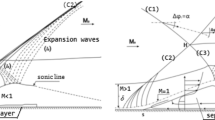Abstract
The accuracy of four industrial shock hydrodynamics codes for blast environments in baffled systems is evaluated based on the shadowgraph data of Reichenbach and Kuhl (1992,3). Both problems involve a planar shock passing through a baffled channel. The numerical methods employed in these codes are representative of two classes, namely, the set of high-resolution schemes advanced in the 1980's, and the classical finite-difference schemes from the late 1960's. The four codes are: (1) the AMR code based on the higher-order Godunov scheme with adaptive grids, (2) the FEM-FCT code based on the flux-corrected transport scheme with unstructured grids, (3) and (4) the finite-difference based HULL and SHARC codes with fixed grids. From the comparisons of these calculations it is concluded that the high-resolution schemes: (1) calculate sharper shocks and sharper density profiles across vortices, (2) predict shear layer rollup forming coherent structures in the spiral vortices immediately down-stream of every baffle, and (3) predict development of inviscid instabilities from these shear layers that, upon interaction with the reverberating shocks in the system, quickly become ‘turbulent’. The finite-difference codes predict essentially laminar behavior for the shear layers. Comparisons with shadowgraph data suggest that both classes of codes are able to predict shock reflections and diffractions in the baffled systems. The high-resolution codes give better agreement in the spiral vortices and the shear layers. As expected, turbulent flow features involving highly dissipative flow fields are not predicted by the high-resolution codes.
Similar content being viewed by others
References
Brown GL, Roshko A (1974) J Fluid Mech 64: 775
Burger MJ, Colella P (1989) J Comput Phys 82: 64–84
Colella P, Woodward PR (1984) J Comput Phys 54: 174
Glaz HM, Collela P, Glass II, Deschambault RL (1985) Proc R Soc Lond A 398: 117
Harten A, Osher S (1987) SIAM J Numer Anal 24: 279
Hikida S, Bell RL, Needham CE (1988) The SHARC Codes: Documentation and Sample Problems Vol. I: Inviscid Fluid Dynamics, Rept. No. SSS-R-89-9878, S-cubed, Albuquerque
Lee CKB (1993), Minutes of the Conventional Weapons Effects Airblast & Structural Calculators Meeting, held on April 28 at LRDA, Albuquerque
Lee CKB, McDonough JM (1995) J Comput Phys 117: 289
Liepmann HW, Roshko A (1957) Elements of Gasdynamics, Wiley
Lohner R, Morgan K, Vahdati M, Boris JP, Book DL (1988) Comm Appl Num Meth 4: 717–730
Marchuk GI (1975) Methods of Numerical Mathematics, 2nd Ed., Springer-Verlag
Matuska D (1984), HULL Users Manual, Rept. No. AFA-TR-84-59, Airforce Armament Laboratory, Eglin Air Force Base
Noh WF (1963) CEL: A Time Dependent, Two Space Dimensional, Coupled Eulerian-Lagrange Code, Rept. UCRL-7463, Lawrence Livermore Laboratory
Noh WF (1976) Numerical Methods in Hydrodynamic Calculations, Rept. UCRL-52112, Lawrence Livermore Laboratory
Reichenbach H, Kuhl AL (1992) Flow Visualization of Shock Propagation in Baffle Systems, Rept. No. T 7/92, Ernst-Mach-Instutt, Freiburg
Reichenbach H, Kuhl AL (1993) Shock-Induced Turbulent Flow in Baffle Systems, presented at the 19th ISSW, Marseilles
Takayama K, Inoue O (1991) Shock Waves 1: 301
van Leer B (1973) Towards the Ultimate Conservative Difference Scheme, I, The Quest for Monotonicity, Lecture Notes in Physics, No. 18, Springer-Verlag, Berlin
van Leer B (1979) J Comput Phys 32: 101
von Neumann J, Richtmyer RD (1950) J Appl Phys 21: 232
Woodward P, Collela P (1984) J Comput Phys 54: 115
Zalesak ST (1979) J Comput Phys 31: 335–362
Author information
Authors and Affiliations
Corresponding author
Additional information
Review of this material does not imply Department of Defense indorsement of factual accuracy of opinion
Rights and permissions
About this article
Cite this article
Lee, C.K.B., Giltrud, M. An evaluation of two classes of shock hydrodynamic codes. Shock Waves 5, 275–285 (1996). https://doi.org/10.1007/BF02425220
Received:
Accepted:
Issue Date:
DOI: https://doi.org/10.1007/BF02425220




